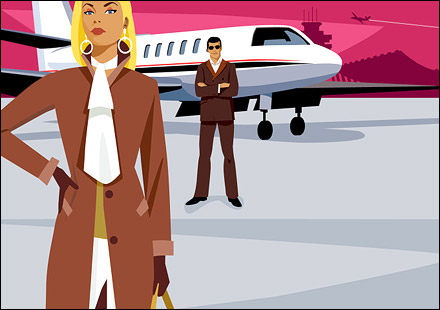 Here are some of the most important things that anyone will need to know when they are flying. Remember to always verify rules and regulations with your country's security administration and with the airline you plan to fly with.
Here are some of the most important things that anyone will need to know when they are flying. Remember to always verify rules and regulations with your country's security administration and with the airline you plan to fly with.
Before you leave home, get information on where you will be staying on your trip - address, phone number - make copies and put this information along with your name in each piece of checked baggage and keep a copy on yourself in case your luggage gets lost. Do the same for the return trip. Also, do not pack anything that you will need (medications, contact lens stuff, etc) in your checked bags. Put this in your carry-on. You are usually allowed to bring 2 suitcases that weigh no more than 50lbs (23kg) each, plus one carry-on per passenger. All airline rules differ on this, so you need to verify this with your specific airline.
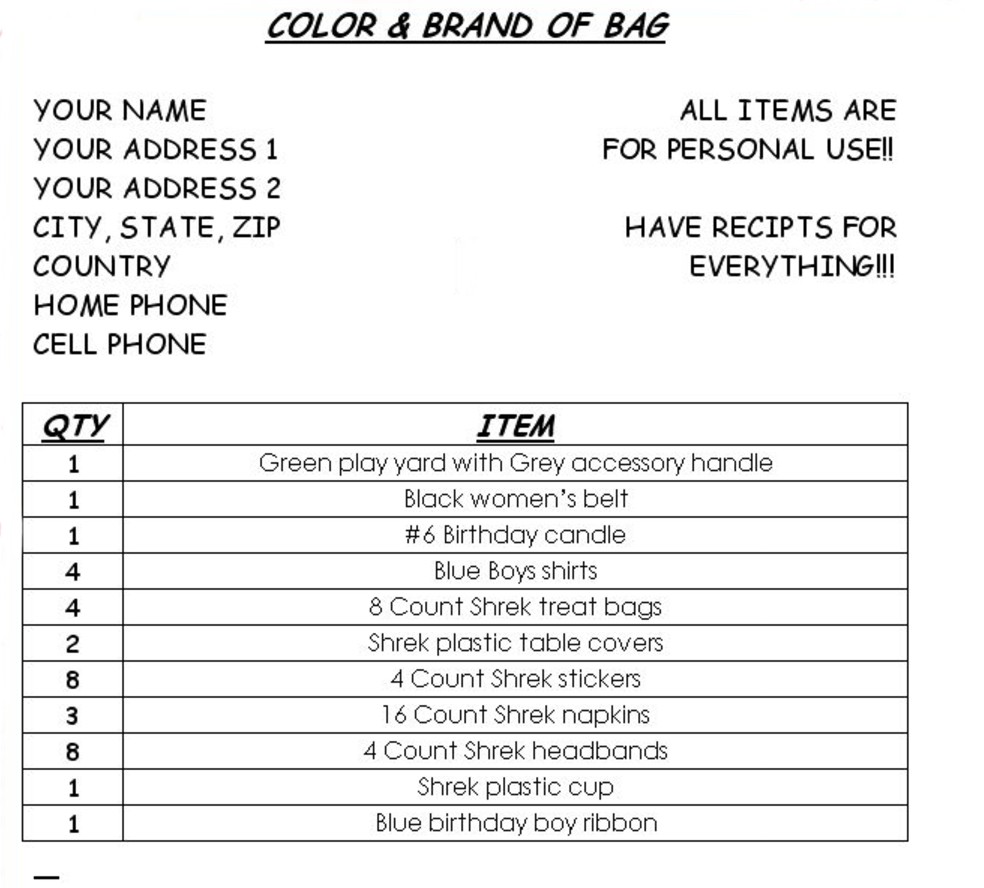

One added piece of advice: when you get to the airport, if there is a service that will wrap your bags in clear plastic (usually about $5 a bag), take it! Most of them will insert a card in there stating that they take full responsibility for the bags and airport security will not cut through the wrap. If they do, you can file a claim with the wrapping company and at least get your money back. NOTE: if you decide to wrap your bags by yourself at home, airport security will not guarantee that they will not cut the wrap to open your suitcase!

TSA (US):
http://www.tsa.gov/travelers/airtravel/prohibited/permitted-prohibited-items.shtm
http://www.tsa.gov/311/index.shtm
EU:
http://europa.eu/rapid/pressReleasesAction.do?reference=MEMO/06/363&format=HTML&aged=0&language=EN&guiLanguage=en
http://ec.europa.eu/transport/air_portal/security/rules_liquids/doc/2006_aviation_security_new_rules_poster_en.pdf
DFT (UK):
http://www.dft.gov.uk/transportforyou/airtravel/airportsecurity/requirements
http://www.dft.gov.uk/pgr/security/aviation/airport/airportsecurityadvertisement
AUSTRALIA:
http://www.infrastructure.gov.au/transport/security/aviation/LAG/index.aspx
http://www.infrastructure.gov.au/transport/security/aviation/LAG/index.aspx
Make sure you get to the airport with plenty of time to check in, go through security, and find your concourse and gate. Rule of thumb is to allow yourself 2-5 hours before your flight. It is always a good idea to call the airport ahead of schedule to see what their wait time for security is for that specific day. Be prepared to do a lot of waiting - in line at the ticket counter, in the security line, in the terminal - you will wait. As long as you know you have given yourself plenty of time though, you shouldnít panic, and can relax (as much as possible).
I found that the easiest way to navigate the airport is to go directly to the ticket counter and check my bags and get my boarding pass. If you have a connecting flight, as long as you can produce a ticket that verifies you are on the next flight, you can request that the airline forward your bags to your final destination. This is great because it will save you time while in transit.
When the ticket agent presents you with your boarding pass, you will also be given you claim ticket for your bags. Keep this is a safe place and do NOT lose it Ė if anything should happen to your bags, you will need it.
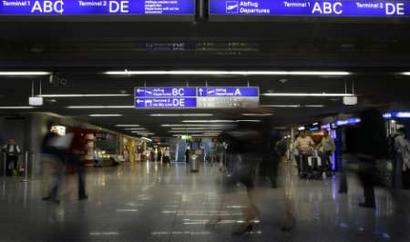
All airports are clearly marked with plenty of signs designed to direct you in the right direction. If you are not sure of which way to go, look UP and there will be plenty of signs to guide you.
Pay attention to the announcements. They may change your departure gate, or need you if there is a question with your ticket. Also, if the plane is overbooked, they will announce a request for volunteers to be bumped. If you volunteer, you will be put on the next flight and you usually get a free round-trip ticket to use in the future, or some other form of compensation. Be sure to find out what the incentives are before agreeing to give up your seat, and donít be afraid to ask for what you want Ė the worst they can say is no. .
They also use announcements to board the plane. Most airlines will seat you by row or "zone" - this will be printed on your boarding pass. When they call out your row or zone, you may board the plane. If you are seated in an exit row, make sure that you are able to do the things that would be required of you: being able to lift a certain weight (if you have to open the window exits, they are generally about 65 pounds - 29kg), being able to hear and see commands from the flight crew, etc.

During take-off and landing, you are asked to raise your shade so that in the event of an accident you can see through the window to help you remain oriented (which way is up, etc.). Because of this, it lets you see what hazards there are outside the plane (fires, debris and such), which would be important during an evacuation. It also serves as a way to let light into the cabin and make it easier for rescuers to see inside. If it is dark outside, they dim the lights to help your eyes adjust to the darkness, so if anything happens and it goes dark, you're not suddenly blinded while dashing for the exits. It also makes the emergency path/exit lights more visible, as these might be the only lights you see in an emergency. As with the shades, it allows you to see outside for orientation, because with the cabin lights burning brightly, the glare would make it impossible.
Also during take-off and landing you are asked not to use any electronic devices, although some may be used after cruising altitude has been reached. Cell phones, wireless computer mouses, etc are banned for the duration of the flight. This is because they pose a risk called electromagnetic interference.
Electromagnetic interference is experienced by all of us on a regular basis. An example of this is if you put a cell phone near the computer, you can hear loud static in the computers speakers every time the phone rings, and the screen may start to shake. This technically should never happen, but the wire to each speaker is acting like an antenna, and it picks up side bands in the audible range. This is not a dire problem -- just a nuisance. But notice how common it is. In an airplane, the same phenomena can cause big trouble.
An airplane contains a number of radios for a variety of tasks. There is a radio that the pilots use to talk to ground control and air traffic control (ATC), a radio that the plane uses to disclose its position to ATC computers, there are radar units used for guidance and weather detection, and so on. All of these radios are transmitting and receiving information at specific frequencies. If someone were to turn on a cell phone, the cell phone would transmit with a great deal of power (up to 3 watts for a single phone). If it happens to create interference that overlaps with radio frequencies the plane is using, then messages between people or computers may be garbled. If one of the wires in the plane has damaged shielding, there is some possibility of the wire picking up the phone's signals just like a computers speakers do. That could create faulty messages between pieces of equipment within the plane. Now imagine what would happen if everyone on the plane were to use electronic devices, and you should be able to fully understand the ban on such devices.
When you taxi, you barely feel the plane move at all. At this point the cabin crew will tell you all you need to know about what to do in case of emergencies and such. They will do a demonstration or show a video of where the exits are, how to fasten your seatbelt, when portable electronics can and can't be used, etc. All the instructions the flight crew will give you are all on the safety card which is in the pouch on the back of the seat in front of you. The captain will come on and give a little speech about the flight and what to expect - something about how long it will take until you take-off, what to expect weather wise in your destination city, and how long the flight should take.
When the plane prepares for take off, it starts to go really fast down the runway, and then within a few seconds you are up in the air. Things may seem a little wobbly at first, but that's just because of moving through the different altitudes. Your ears might "pop" as you climb through the altitudes.
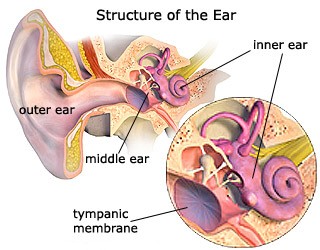
Your ears pop in air planes because the air high above the surface of Earth is less dense than air near the surface. As you ascend in an airplane and the air pressure decreases, the air trapped in your inner ear will cause your eardrums to push outward. This expansion causes not only the discomfort you feel before your ears "pop," but also a decrease in hearing ability, because the pressure on your ears drums makes the sound harder to transmit. Your body can equalize the pressure between your inner ear and the atmosphere by allowing some air from your inner ear to escape through the Eustachian tubes, two small channels that connect the inner ears to the throat, one on each side. When they open, you feel the pressure release and you hear the change because itís happening in your ear. This equalization of pressure is the "pop."
On the way down from an air plane flight, the air pressure increases, while your inner ear is still at the lower pressure it has adjusted to. Now, the extra pressure pushes the eardrums inward. Eventually, the pressure will equalize again, but many people donít like to wait, they want to "pop" their ears
Once you are in the air, things will feel smooth. You will hear the humm of the engines, but that's normal, nothing to worry about. I actually find it relaxing. If there is turbulence, you might feel the plane wobble a little bit (usually up and down) but remember, planes are designed to withstand this, so take a deep breath and try not to think about it. It might give you a few butterflies in your stomach though. After a few minutes, you will hear a ding. This is the captain letting the flight attendants know that the plane has reached the cruising altitude. At this point, the rate of ascent will decrease. You will also get an announcement that it's OK to use portable electronic devices at this time.
When you are approaching landing, your ears again might "pop" as you descend through the altitudes (remember the techniques above to help alleviate the pressure). You will feel the plane slow down and the cabin crew will prepare you for landing. As you get close to your destination, the captain will come back on and tell you how much longer until you land, and what the weather is like. When the plane touches down it kind of feels like a short jolt, and then you hear them turn the engines to idle and the plane slows down pretty fast.
From there, the plane will taxi to either the gate or the designation where a bus will pick you up. You wait for the plane to decompressurize a few moments before they start letting the passengers out. That was your flight.
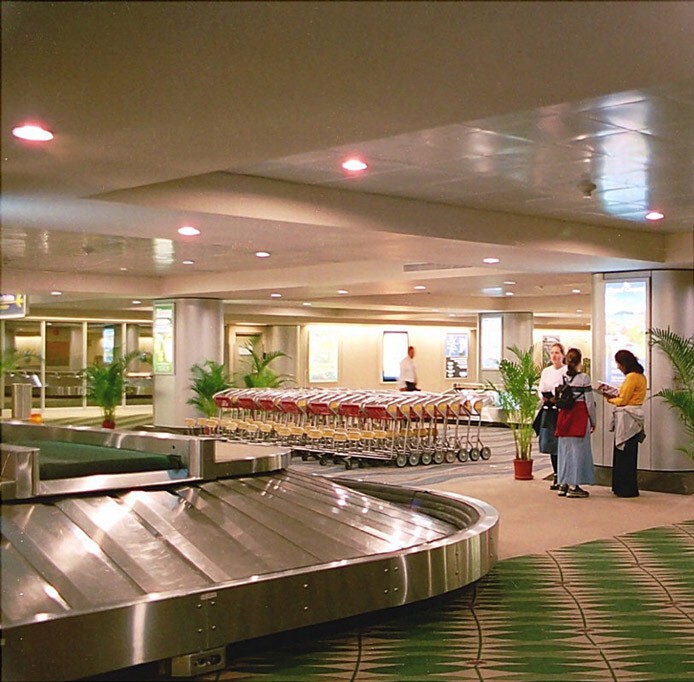
I have found that it really makes no difference if you rush to be the first off the plane, or if you hang out until the very end. By rushing, you are only getting to the baggage carousal faster, and as we all know, just because you are there first does not mean your bags will be.
But if your luggage is not there, do not leave the airport before completing the paperwork from the baggage agent. Fill out all information about your luggage on the forms provided. Present them with your baggage claim ticket (what you were given when you checked your luggage in at departure). Be as detailed as possible. They will track it, get it on the soonest available flight and have it shipped to wherever you are staying, or forward it to your next destination. Get a phone number to call in case you need to follow-up. Most airlines have a policy that all lost, damaged, or delayed property MUST be reported within 24 hours and a claim made in writing within 45 days giving full description and value of the missing property.
If you need basic amenities such as toothbrush, toothpaste and razor to be ready for a meeting, ask. Most airlines will provide these for you while you're waiting for your suitcase.
If the airline actually loses your bags, make sure you get a written claim for damages. This may require a different form than the original "missing luggage" form. This can be done at the airport or by mail.
For travel wholly between U.S. points, liability for delay, damage or loss to checked baggage, including carry-on baggage the liability limits are as follows:
* A maximum of $2,800 per passenger for travel on/before Feb. 27, 2007
* A maximum of $3,000 per passenger for travel on/after Feb. 28, 2007
For international travels, including the domestic portions, subject to the Warsaw Convention, the liability limit for delay, damage or loss is approximately $9.07 per pound ($20.00 per kg) for checked baggage and approximately $400 per passenger for unchecked baggage. Where the Montreal Convention applies, the liability of the UA Carrier for the delay, damage or loss to checked and unchecked baggage is limited to 1,000 Special Drawing Rights per passenger.
You may need to produce receipts. If you have them, include copies in any documentation you send to the airline. You can purchase "excess valuation" protection if your checked baggage is worth more than these limits.
From personal experience, they will compensate IF you are able to prove what you had and the value of what you had in your luggage. This is why I am so fastidious in keeping receipts, a detailed list of what is in each suitcase, and pictures! As they state in their policies, they only reimburse up to a certain amount (this is where the travel insurance kicks in and more than pays for itself).
You WILL have hassles, especially if your things are not documented, because they have the hard job of deciding if you are telling the truth or just trying to get money from them. If you have travel insurance, you can submit a claim to them and they will reimburse your costs faster and easier than the airline would. Things like DVDs, and CDs are harder to get reimbursed.
If all else fails be sure to file a complaint immediately. If you still can't get satisfaction, or feel the need to report the airline, write or call:
DOT Aviation Consumer Protection
400 Seventh Street, S.W. #4107
Washington D.C., 20590
Telephone: (202) 366-4000
Website: http://airconsumer.ost.dot.gov/


 Sign My Guestbook
Sign My Guestbook